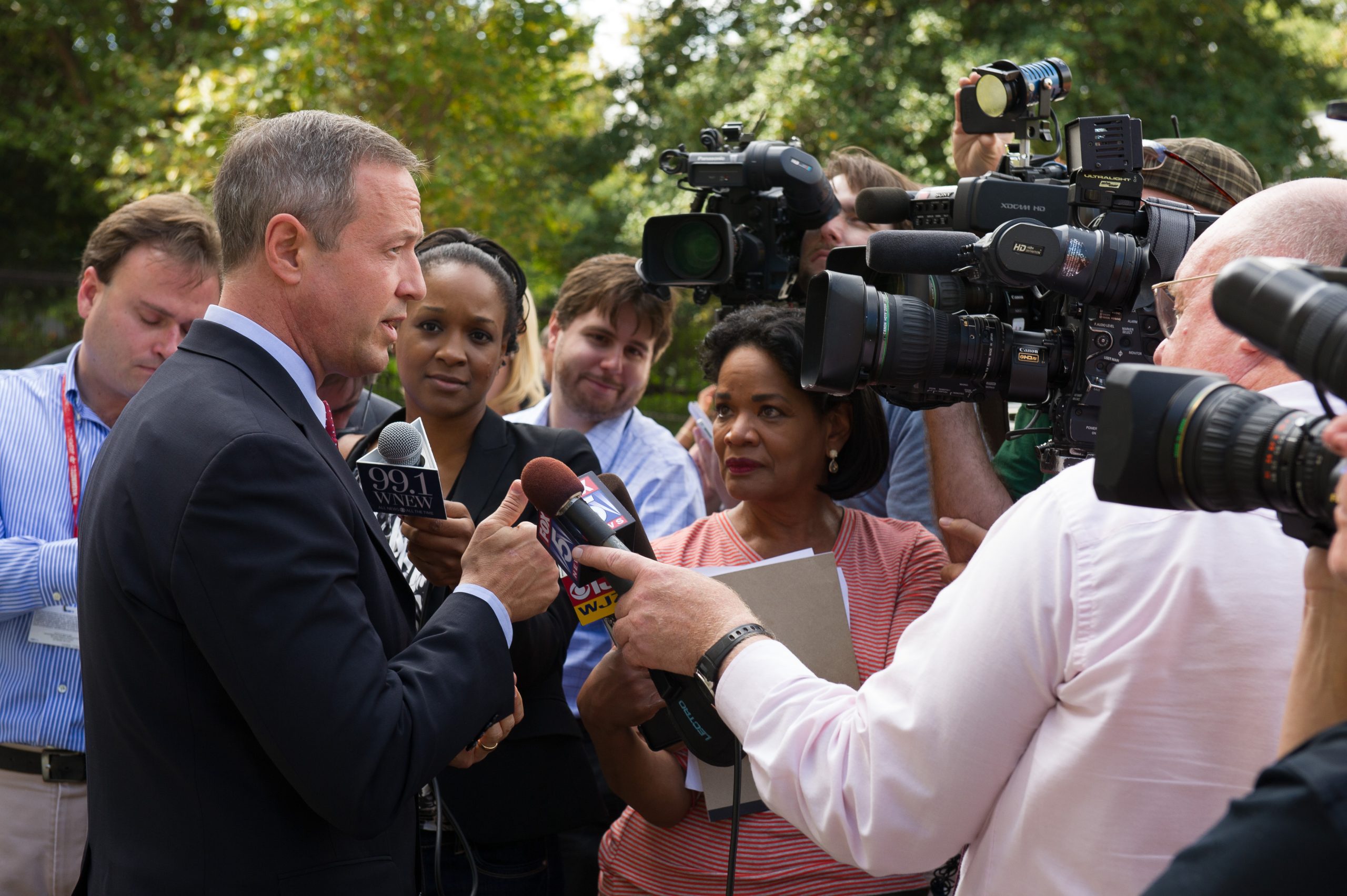2 Newsworthiness
By Erin Massey Hiro
When writing a news story, you first need a newsworthy idea. This chapter will cover the elements of what constitutes news and how to find those ideas. This is harder than you think. Most new journalists think there are countless story ideas bouncing around in their heads. But when you write them down and do a little research, you might learn that many have been done to death. This chapter includes tips for finding fresh ideas for your news stories.
When I was a reporter for a local newspaper, I covered a small town. Readers would call or email me with story ideas that they would want me to write about. Some were worth covering, and some were not newsworthy. Newsworthiness is the quality of a story idea that’s interesting enough to warrant a public report about it.

Reporters use seven elements to evaluate a story idea for newsworthiness. This concept grew out of a research paper by Johan Galtung and Mari Holmboe Ruge in 1965. For the next 50 years, people debated about whether Galtung and Ruge were right. Overall, their criteria held up, though some pointed to a need for updates, according to a 2016 study by three researchers from Belgium, Germany and the Netherlands.
As they write in the abstract: “In recent years, scholars also pointed toward the increasing impact of digital media on journalistic practices of news selection. Likewise, new perspectives on global journalism were introduced into the debate.”
While the news values may require changes with modern technology, learning the basic measurements for a news story is still relevant. Here are the seven to consider when looking for ideas.
- Impact: When I was a reporter, people would call the newspaper to complain about a noisy or problematic neighbor. That may have impacted them and perhaps a few other people on their street, but the annoying neighbor did not impact most of our readers. Impact is the effect of a story on readers. The bigger the impact, the more newsworthy. There is no better example than COVID-19. The virus impacted every country in the world. Most stories have a limited impact. You must decide if a story impacts a few people on a street or an entire city.
- Timeliness: If a car accident causes traffic on the way to work, a reader will care more if it is happening now versus last week. Timeliness is the idea that the more recent a story, the more interesting it is to your reader. The older the idea, the less newsworthy.
- Proximity: A story is more interesting to a reader if it happens near them geographically. If there’s a wildfire, a reader will be more interested if it’s in their neighborhood. Look for story ideas that affect readers where they live.
- Prominence: When a famous person does anything, it is more interesting than if unknown people are involved. This is called prominence. You see this all the time in the endless news about celebrity divorces and politicians’ gaffes. Famous people are interesting to readers. Remember, though, your job as a reporter is to give the reader what they want (chocolate news) but also what they need (broccoli news). Using only this measurement will result in interesting but unimpactful news. A good balance is important.
- Conflict: Arguments or disagreements make a story more interesting. For example, if a city wants to build a new park and everyone agrees on the location, it’s not as newsworthy as if people disagree. If multiple people show up to fight for their side, that is newsworthy.
- Human Interest: This is a measure of newsworthiness based on the notion that readers are naturally interested in their fellow humans. These are often stories about inspiring or interesting people. For example, I received a story tip about a teenager who would spend his weekends playing the claw machine at the arcade. He was particularly good at it and could use the claw to snag a toy. By the end of the day, he would have a trash bag full of stuffed animals that he would immediately take to homeless shelters for the children there. I created a human-interest story about him and why he did this.
- Novelty: Weird is interesting. The measurement of novelty goes that the stranger something is, the more newsworthy it is. Look for something unusual when you are searching for story ideas.
Generating Story Ideas
Finding a newsworthy story idea is difficult. Journalism students might come to class with three story ideas and discover that they all have the same inspiration. It makes sense: People are drawn to what they are passionate about. The trick is finding an idea that is interesting to the reporter and their audience.
The same techniques work for generating story ideas in both news and feature stories. A news story is a nonfiction, objective article that informs the public about vital information such as current events, concerns and conflicts. A feature story is a nonfiction, objective article that informs the public about interesting and entertaining information.
Using the newsworthiness values we just learned, here are 10 ways of finding story ideas.
- Read other news and feature stories. Consume what other people are writing about and see if there is a fresh angle for your readers. If you are writing for your college news site, consider whether a story about traffic in your city might also be a relevant story about traffic impacts to your campus.
- Look into research. If you come across a new finding, consider whether it might impact your community. If the study is relevant, you could start with that study and ask people around you what they think of it. For example, research on the increasing cost of textbooks could lead you to interview students and someone from the campus bookstore.
- Be curious. Put your phone down and notice what’s going on around you. You might see an interesting news or feature story. Did you notice that students at your college are attending classes on different campuses or multiple colleges? You might have spotted a new trend. Ask that classmate if you can ask them some questions about it.
- Be nosy. Challenge yourself to ask one new person each day a question about themselves. You will be surprised at what you can learn about others through one simple query. Those responses could lead to inspiring story ideas.
- Consider the basics. Money, health and family are important to everyone. Are there any story ideas there? If you hear students say they can’t afford to go to the doctor, that is an important news story.
- Don’t forget profiles. A profile is a story about a person. You are surrounded by interesting people. Remember, ethics dictate that you can’t write about friends and family, but you still will meet newsworthy people in your daily life. I once wrote about a woman who had been a school bus driver for 50 years. I produced a profile about her and her stories from her time on the road. She told me that when she first started driving, the school district gave her a wooden paddle for discipline. Everyone has an exceptional tale to tell. A good reporter keeps asking questions until they find it.
- Changes are often interesting. Anything that is different is notable. Did your college’s enrollment go up or down? Are there fewer course offerings than there were last year? Ask why.
- See what your leaders are up to. I know it can be boring, but attending any public meeting, whether for a school board or city council, means access to information that can lead to several story ideas.
- Get social. When you’re wasting time on social media, notice what you keep seeing. Anything new and interesting that impacts your readers? If so, use that as your launch point for a story.
- Be open to stories all the time. Story ideas don’t always come to you when you need them. If you keep a running list on your phone, you will have some options at the right time.
It also can be valuable to develop a speciality. Robert Zamith, author of “The American Journalism Handbook: Concepts, Issues and Skills” writes about this: “Going deep on a particular person, topic or beat can help you familiarize yourself with (and develop relationships with) the key stakeholders pertaining to that beat. Once you have identified a niche, continue to follow it and learn more about it.”
If you love music or sports and want to immerse yourself in that area, you will be able to produce better story ideas than a casual observer. Use your passion to improve the angles in your news stories.
Misinformation
Zamith urges journalists to be wary of misinformation and disinformation in the quest for a newsworthy item.
Fake news is false or misleading information presented as news. Zamith writes that the “highly problematic term was crafted with the intention of discrediting journalism and blurring the lines between professional news products and general information. Its popularization has been credited with reducing trust in journalism and increasing violence against journalists.”

The terms “misinformation” and “disinformation” help to capture the range of inaccurate information in an accessible way. Misinformation refers to information whose inaccuracy is unintentional (e.g., getting some information wrong during a breaking news event).
Disinformation refers to information that is deliberately false or misleading. Both are battles to fight for journalists. With diligent reporting, research and adherence to ethics, a good journalist can avoid these pitfalls and help restore journalism’s good name.
In a scientific paper, authors Jevin D. West and Carl T. Bergstrom explore the wide-ranging problems with misinformation.
“Humans learn about the world by collectively acquiring information, filtering it and sharing what we know,” they write. “Misinformation undermines this process. The repercussions are extensive. Without reliable and accurate sources of information, we cannot hope to halt climate change, make reasoned democratic decisions or control a global pandemic.”
Key Takeaways
- Newsworthiness is the quality of a story idea that is interesting enough to warrant a public report about it.
- There are many ways to find story ideas, ranging from reading a wide variety of other stories to being curious and asking people questions. Consider writing a story about the people you meet. Everyone has a story to tell.
- There are seven elements to evaluate a story idea for newsworthiness.
- Impact: What is the effect of a story on readers?
- Timeliness: The more recent an incident, the more important it is to your reader.
- Proximity: A story is more interesting to a reader if it happens near them.
- Prominence: When a famous person does anything, that is more newsworthy.
- Conflict: Arguments or disagreements make a story more fascinating.
- Human interest: Readers are naturally curious about their fellow humans.
- Novelty: Weird is interesting.
Chapter Exercise
This exercise will help you review and learn the elements of newsworthiness. Using free media websites such as NPR, Voice of San Diego and Vox, find a sample article for each of the elements below. List the URL of the article next to the measurement. Keep for review.
- Impact: News story example _____________________________
- Timeliness: News story example _____________________________
- Proximity: News story example _____________________________
- Prominence: News story example _____________________________
- Conflict: News story example _____________________________
- Human interest: News story example _____________________________
- Novelty: News story example _____________________________
This chapter is composed of material taken from Newsworthiness by Erin Massey Hiro in Broccoli and Chocolate: A Beginner’s Guide to Journalism News Writing by Erin Massey Hiro and is used under a CC-BY 4.0 license. No changes have been made nor original material added.
"Supreme Court" by skpy is licensed under CC BY-SA 2.0.

